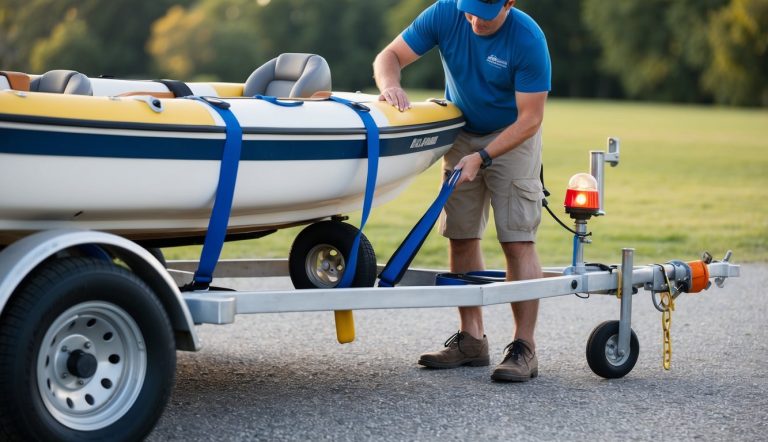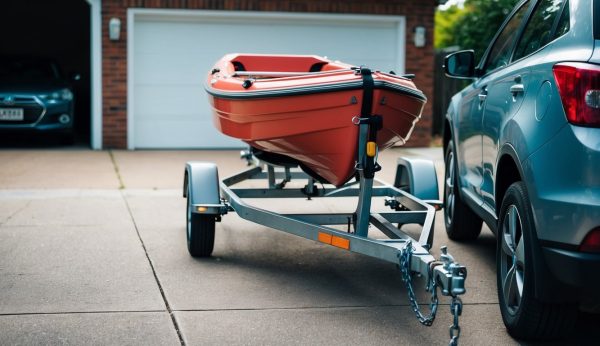Moving a dinghy for the first time can feel like a big challenge. You need to understand several key steps to ensure your small boat arrives safely at its destination. From proper preparation to choosing the right transport method, there’s a lot to consider before your dinghy hits the road.
Taking time to plan your dinghy move will save you money, prevent damage, and make the entire process much smoother. You’ll want to clean your boat thoroughly, secure loose items, and determine whether you’ll transport it yourself or hire professionals. Understanding the basics of dinghy transport helps you protect your investment and start your boating adventures without unnecessary headaches.
Understand local maritime regulations
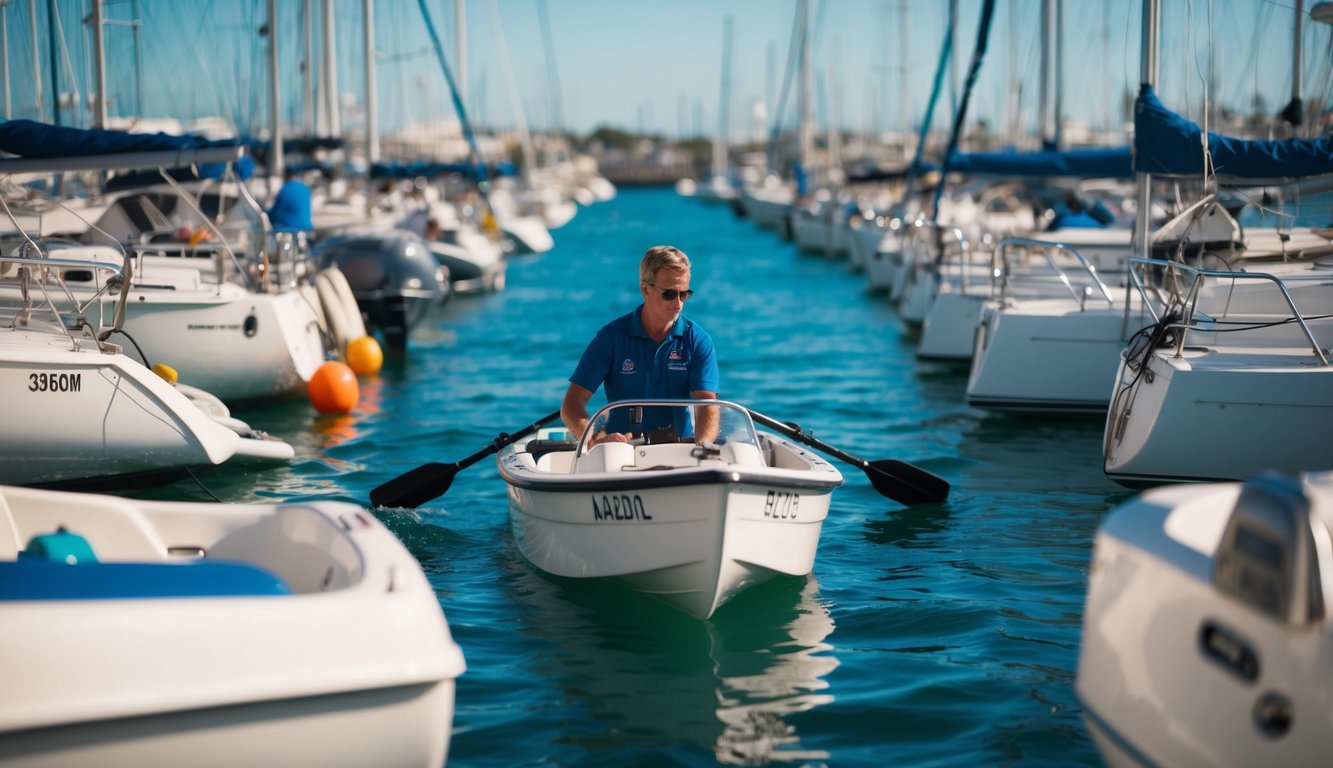
- Before moving your dinghy, you need to know the boating laws in your area. Each state has different rules about boat registration and operation.
- You should check if your dinghy needs to be registered. When moving a vessel to a new state, the Certificate of Number (CON) remains valid for 60 days. Contact your state boating authority to learn about local registration requirements.
- Some areas require boat operators to complete a boater education course approved by the National Association of State Boating Law Administrators. This results in a safety card that you must carry while operating your dinghy.
- When transporting your dinghy, you need to understand weight limits and legal requirements for trailering. Different states have varying rules about trailer lights, permits, and maximum dimensions.
- Always file a “float plan” with family or friends before heading out on the water. This ensures someone knows your planned route and expected return time.
Secure comprehensive boat insurance
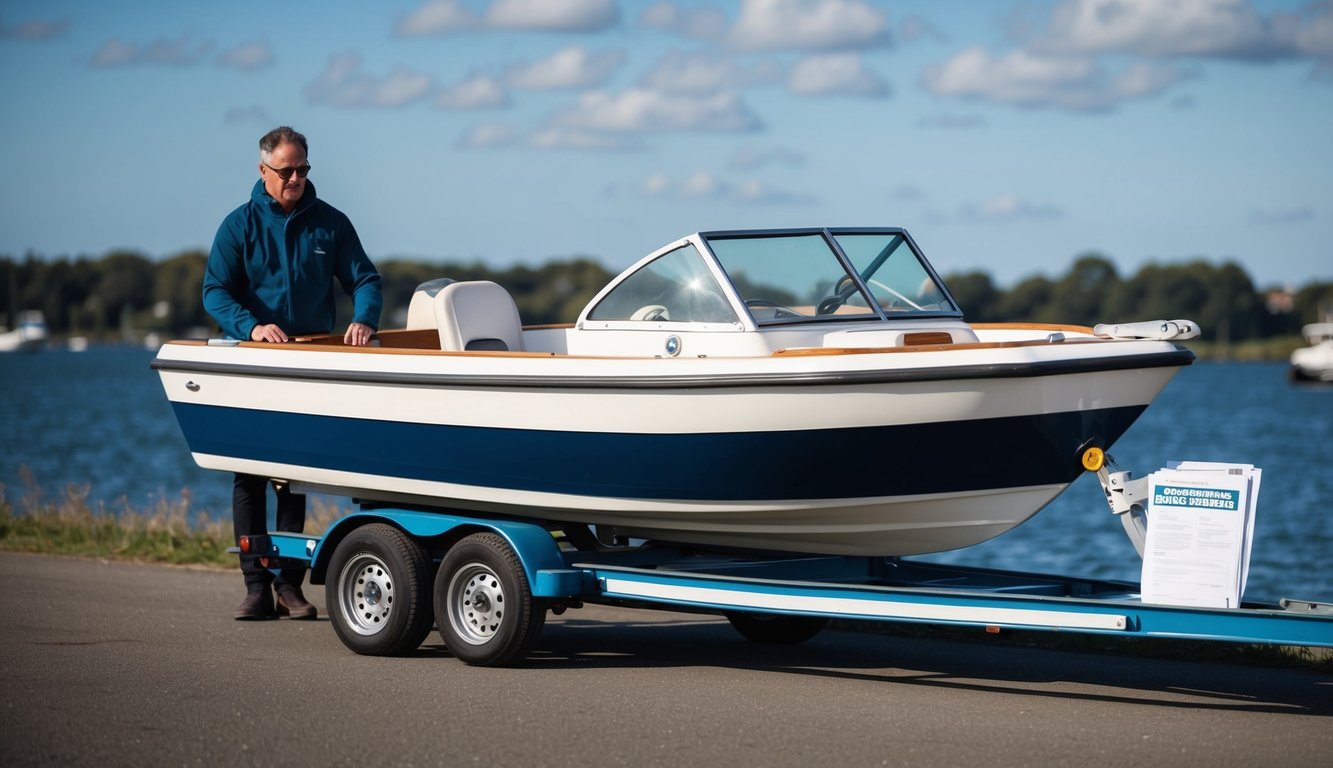
- Even for a small vessel like a dinghy, boat insurance is an important consideration. While only a few states require boat insurance, getting coverage protects you from potential financial losses.
- When shopping for dinghy insurance, look for a policy that covers both physical damage and liability. Physical damage coverage helps pay for repairs if your dinghy is damaged, while liability coverage protects you if someone is injured while on your boat.
- You should consider separating your dinghy insurance from your homeowner’s policy. Many boat-specific insurance policies offer more comprehensive coverage for marine vessels.
- Your dinghy insurance should also cover the trailer used to transport it. This ensures you’re protected during the moving process as well as when your boat is in the water.
- Check if your policy includes coverage for carry-on items and mechanical breakdowns. These additional protections can save you money if something goes wrong with your equipment.
- Remember that insurance requirements may vary based on where you plan to operate your dinghy. Some waterways or marinas might require proof of insurance before allowing you to launch.
Practice safe dinghy towing techniques
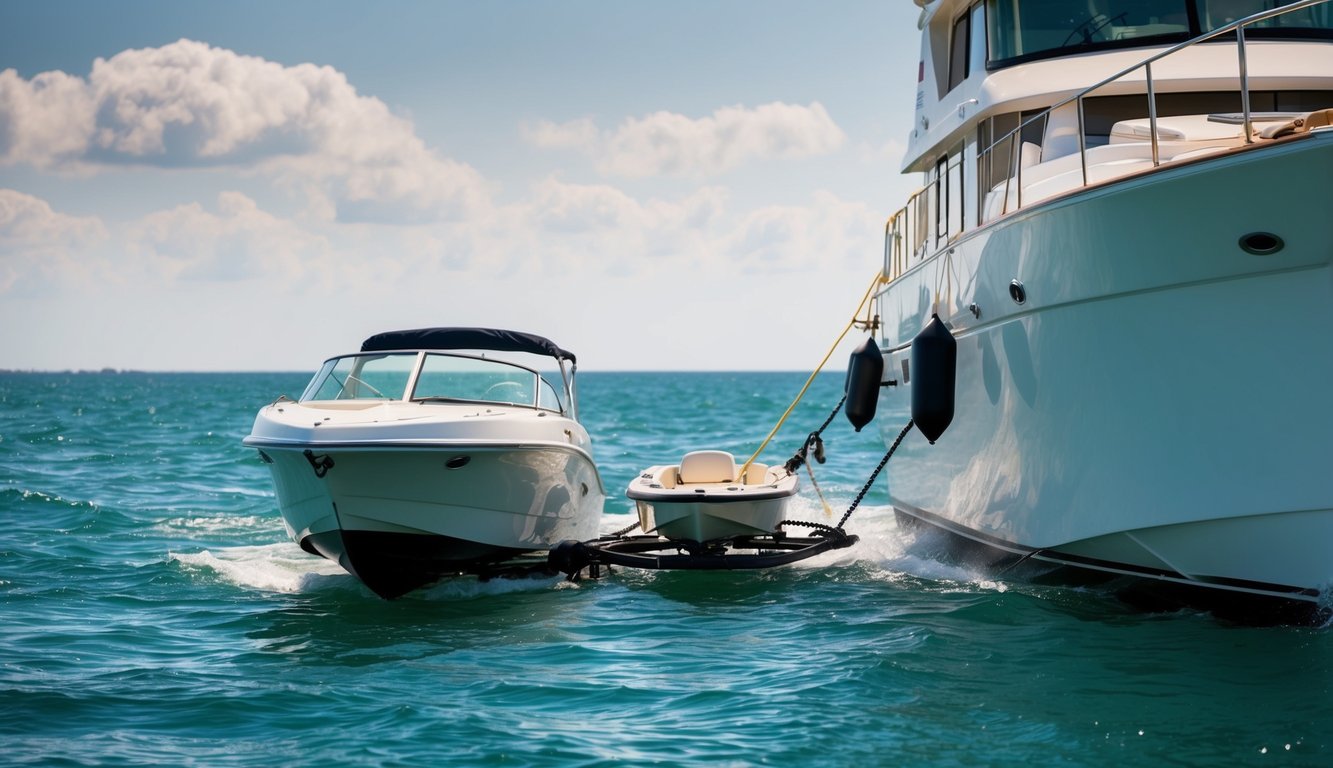
- When towing a dinghy, always start by removing all equipment from inside. Take out paddles, life jackets, and other gear before starting your journey. Make sure the transom drain plug is securely installed to prevent water from entering.
- Check your towline regularly for wear and tear. A frayed line can break unexpectedly, creating a dangerous situation on the water. Replace damaged lines immediately.
- Before any trip, inspect all connection points thoroughly. This includes checking tow bar mounts, brackets, fasteners, and safety cables to ensure everything is secure.
- Slow down in rough waters to reduce strain on the towline. The jerking motion caused by waves can damage both your boat and dinghy.
- Remember to shorten the towline before approaching docks or anchorages. This gives you better control during these critical maneuvers.
- Consider bringing the dinghy alongside your boat when entering crowded areas. This configuration offers more precise handling in tight spaces.
- Always maintain a safe speed when towing. Going too fast increases strain on connections and makes your boat harder to control in emergency situations.
Inspect and maintain dinghy hull
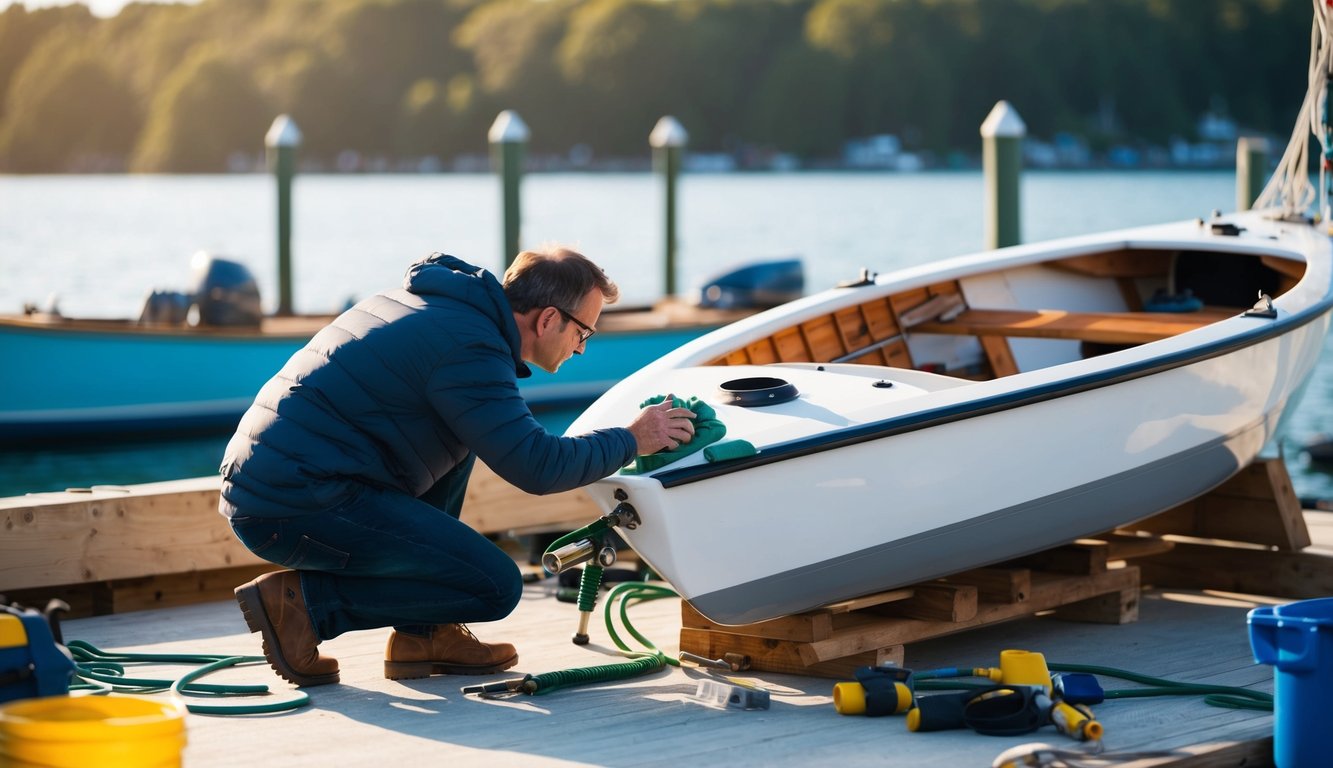
- Regular hull inspection is crucial for dinghy safety and longevity. You should check your hull after each use to catch minor issues before they become serious problems.
- Look for cracks, blisters, or any damage on the hull. Small cracks can quickly worsen when left untreated, especially after impact with rocks or docks.
- Clean your dinghy hull frequently with mild soap and fresh water. This removes salt, dirt, and algae that can damage the surface over time.
- Pay special attention to the bottom of the hull where scratches and wear commonly occur. Even small dinghies benefit from careful hull maintenance.
- Check for soft spots by pressing firmly along the hull surface. Soft areas might indicate water absorption or delamination, especially in fiberglass dinghies.
- Inspect the keel or centerboard area carefully. This part often experiences the most stress and might show damage first.
- Consider applying a protective wax to fiberglass hulls every few months. This provides an extra barrier against water and UV damage.
- For inflatable dinghies, check for proper inflation and look for potential air leaks. Small punctures can be repaired early before they expand.
Invest in proper safety gear
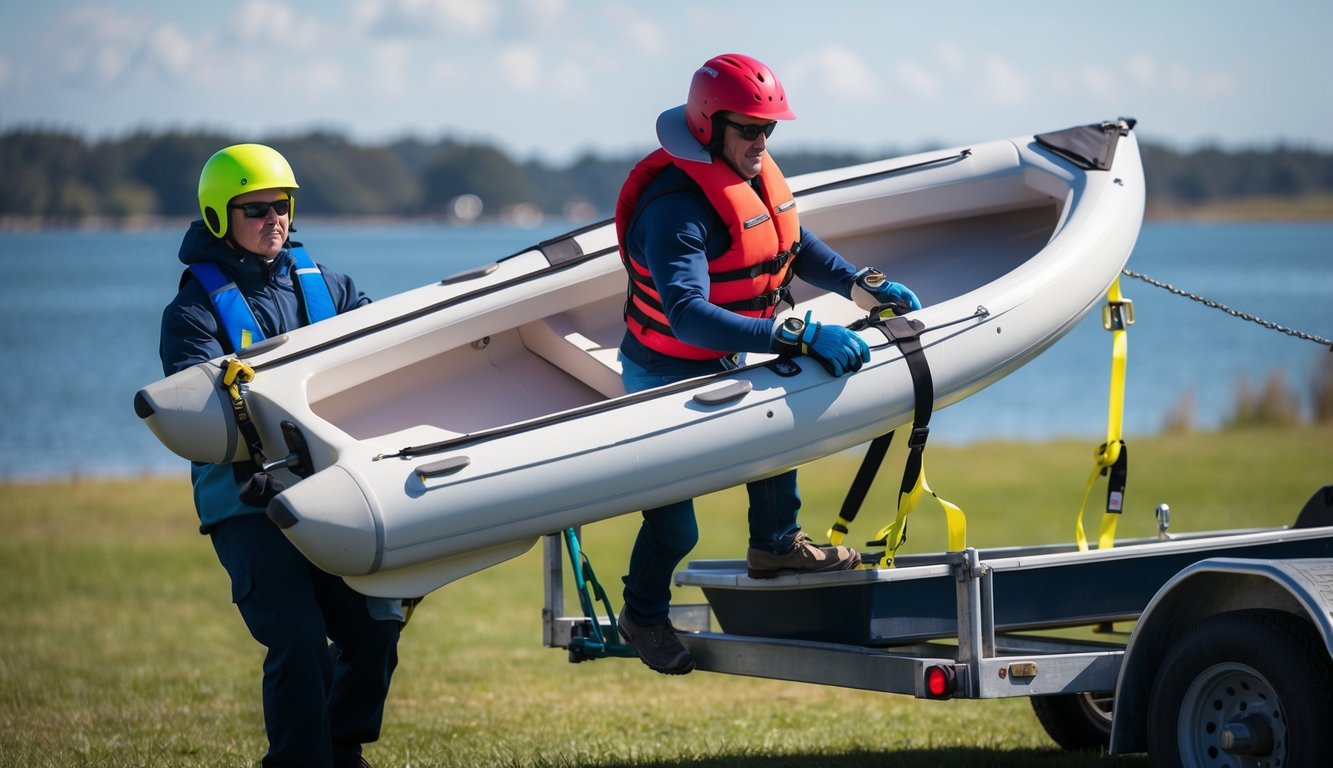
- Safety gear is essential when using a dinghy. Your safety equipment can make the difference between a minor incident and a serious emergency.
- First, make sure everyone has a personal flotation device. Life jackets should fit properly and be worn at all times while on the water, not just stored in the boat.
- A sound device like a whistle or horn is necessary to signal for help if needed. This simple tool can alert nearby boaters if you’re in trouble.
- Carry a first aid kit for treating minor injuries. Small cuts and scrapes happen frequently on boats, and you’ll want supplies handy.
- If your dinghy has a motor, a fire extinguisher is required. Know how to use it before an emergency occurs.
- Don’t forget navigation lights if you plan to use your dinghy after sunset. They help other boaters see you in low light conditions.
- An anchor with line can keep you in place during an emergency. This prevents drifting into dangerous areas if your engine fails.
- Always carry your registration details as required by local regulations. This documentation proves ownership and compliance with boating laws.
Familiarize with local waterways
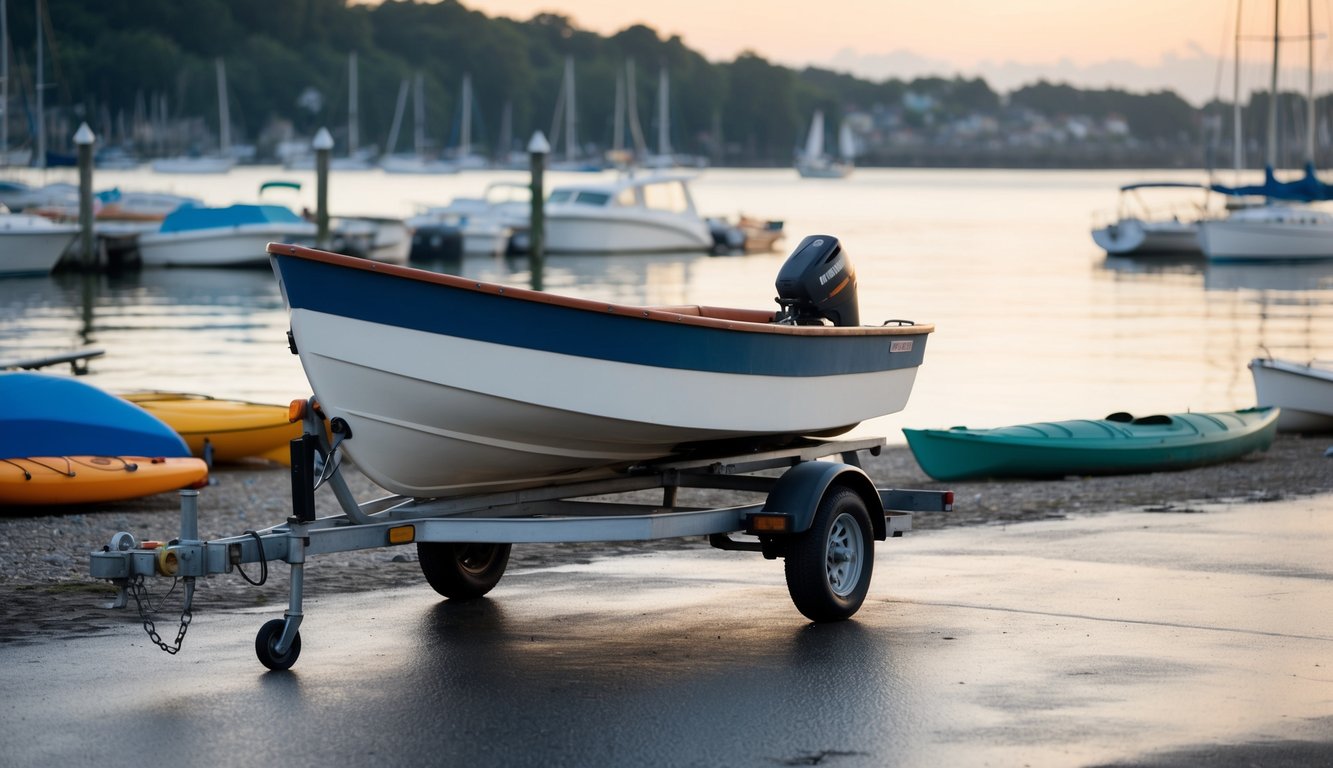
- Before moving your dinghy, you need to know the waters you’ll be navigating. Getting familiar with local waterways helps you avoid dangerous situations and plan safe routes.
- Always have navigation charts for your area on board. These maps show important features like channels, shallow areas, and hidden hazards that might not be visible from the surface.
- Take time to learn about local landmarks that can help you navigate. Recognizable buildings, unusual trees, or distinct shoreline features can serve as reference points when you’re on the water.
- Understanding tidal patterns is crucial if you boat in coastal areas. Tides can change water depths dramatically and create strong currents that affect your dinghy’s handling.
- Local boating regulations may vary between different waterways. Some areas have speed limits, no-wake zones, or restricted access during certain times.
- Always familiarize yourself with landmarks, submerged hazards, sandbars, and channels before heading out. This preparation prevents surprises while you’re on the water.
- Consider joining a local yacht club or boating group. Experienced members can share valuable knowledge about local conditions and potential trouble spots that maps don’t always show.
Plan transportation route meticulously
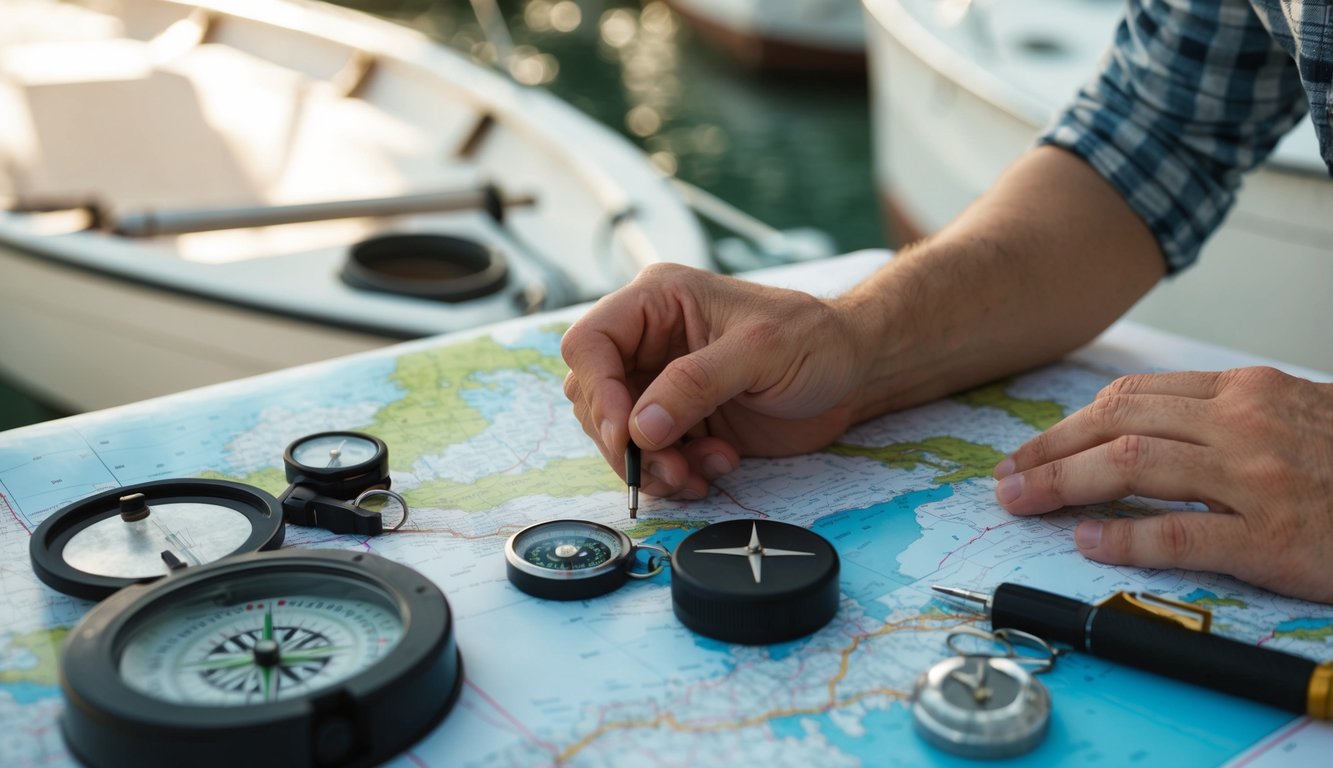
- Moving your dinghy requires careful route planning to avoid problems on the road. You should map out your entire journey before setting off with your boat in tow.
- Check for bridges, weight limits, and road conditions along your intended path. Low bridges can damage your dinghy if you’re not paying attention to clearance heights.
- Avoid routes with excessive traffic when possible. Congested areas make maneuvering with a trailer more challenging, especially if you’re new to towing.
- Look for wide roads that give you plenty of space to navigate. Narrow country roads may seem scenic but can cause stress when meeting oncoming traffic.
- Consider the time of day for your journey. Planning your transport during off-peak hours can make the trip smoother and less stressful.
- Have backup routes prepared in case of unexpected road closures or construction. This preparation prevents last-minute scrambling if you encounter obstacles.
- Check weather forecasts for your travel day. Strong winds can make towing a dinghy dangerous, especially for beginners.
Ensure trailer compatibility
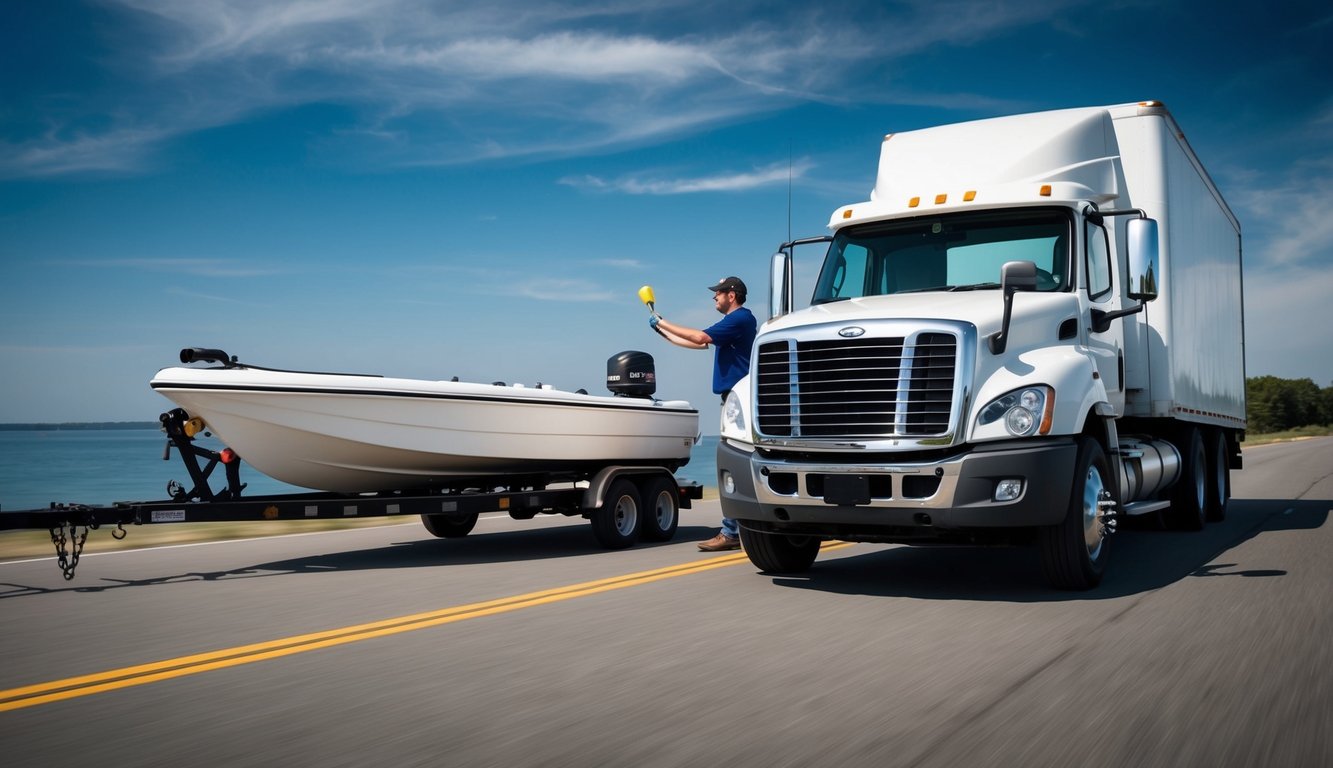
- Choosing the right trailer for your dinghy is crucial for safe transportation. Before purchasing a trailer, you need to understand both your dinghy’s specifications and your vehicle’s towing capacity.
- Your trailer should match your dinghy’s size and weight. Understanding your vehicle’s towing capacity and matching it with the trailer’s weight is essential for safety.
- Check if the trailer can be adjusted to fit your boat properly. Some trailers allow for modifications to accommodate different boat shapes and sizes. You may need to add or change bunks to ensure your dinghy sits correctly.
- Ensure the trailer has proper support points for your dinghy’s hull. Incorrect support can damage your boat over time or during transit.
- Don’t forget to examine the trailer’s components. Check that the winch, rollers, and bunks are appropriate for your dinghy’s design.
- The trailer’s weight rating should exceed your dinghy’s weight plus any gear you’ll transport. This provides a necessary safety margin during towing.
- Remember that proper tie-down straps and safety chains are essential for securing your dinghy to the trailer. These must be in good condition and properly rated for your boat’s weight.
Learn dinghy launching procedures
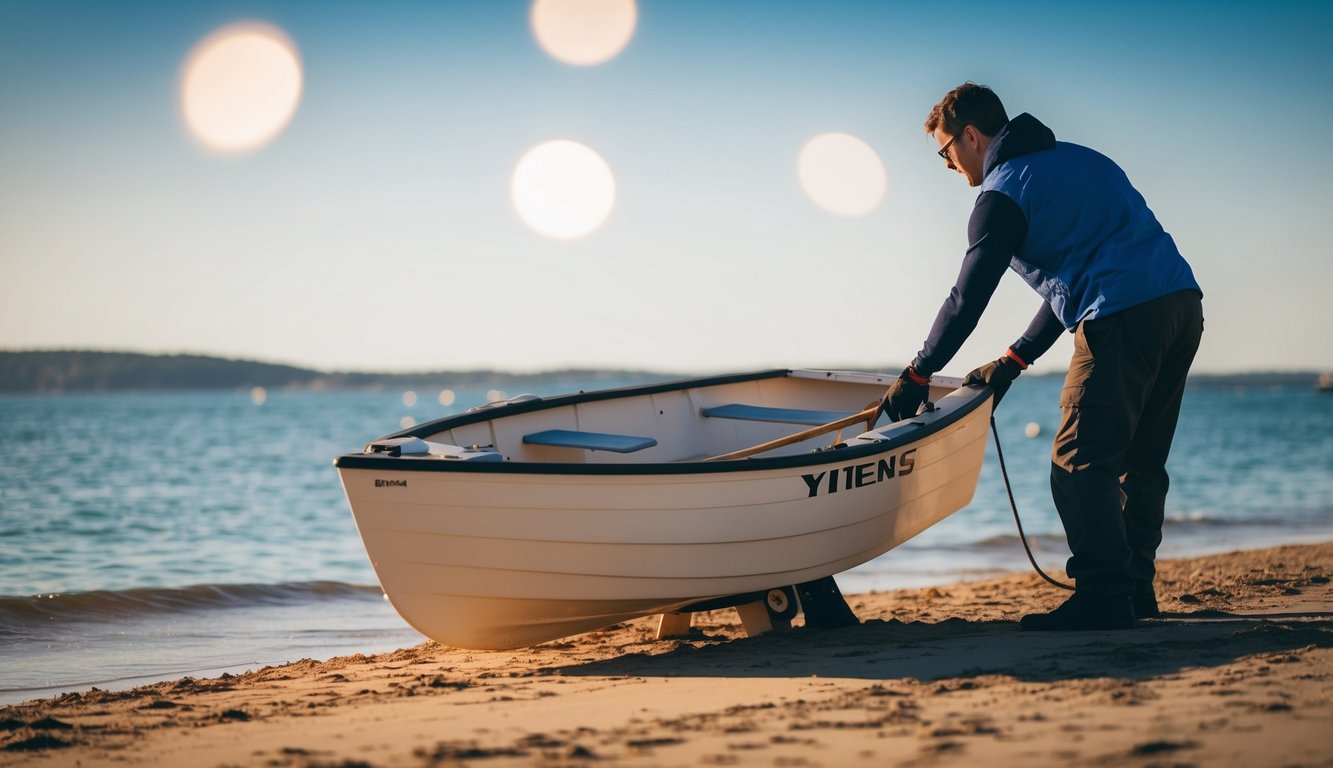
- Launching a dinghy properly helps you start your sailing adventure safely. Before heading to the water, make sure all your equipment is ready and secured.
- When using a boat ramp, first raise the sails while on land. Release all lines including the boom vang, downhaul, main sheet, and jib sheet to prepare for a smooth launch.
- For smaller dinghies in calm conditions, you can use a bridle on the bow for launching. Always ensure the painter (rope) is securely attached to prevent your boat from drifting away.
- Begin your launch by carefully pushing your dinghy into shallow water. Keep the centerboard or daggerboard raised until you reach deeper water to avoid damage.
- Make sure you’ve completed all pre-launch safety checks before fully launching. This includes reviewing capsize recovery procedures and rigging instructions.
- Once in the water, hold onto your dinghy firmly until you’re ready to board. Enter the boat carefully to maintain balance and avoid tipping.
- After boarding, lower your centerboard gradually and prepare to raise your sails if you haven’t already done so on land.
Prepare necessary documentation
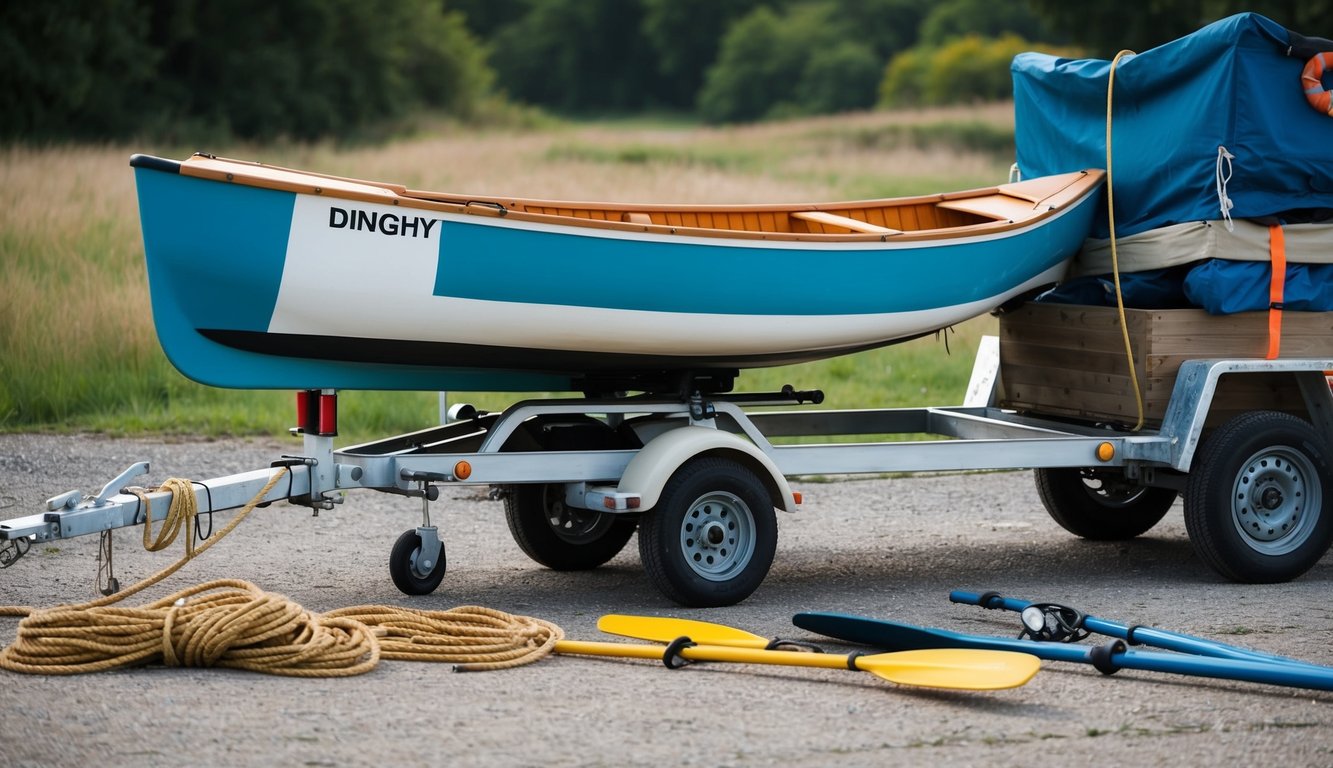
- When moving a dinghy for the first time, having the right paperwork ready is essential. You’ll need your boat’s registration documents to prove ownership and comply with local laws.
- Keep your boat insurance information handy too. Many marinas and launch sites require proof of insurance before allowing you to use their facilities.
- Your boater identification card or boating license should always be with you when operating your dinghy. Requirements vary by state, so check your local regulations.
- If you’re transporting your dinghy on a trailer, make sure to have your vehicle registration and trailer documentation available. Law enforcement may ask for these during routine stops.
- Store all important boat documents in a waterproof container. This protects them from water damage and keeps them organized in one place.
- Consider creating digital backups of all paperwork. Save copies on your phone for quick access when needed.
- Check if you need a Certificate of Documentation from the Coast Guard for your dinghy. While not always required for smaller boats, it’s worth knowing the regulations.
